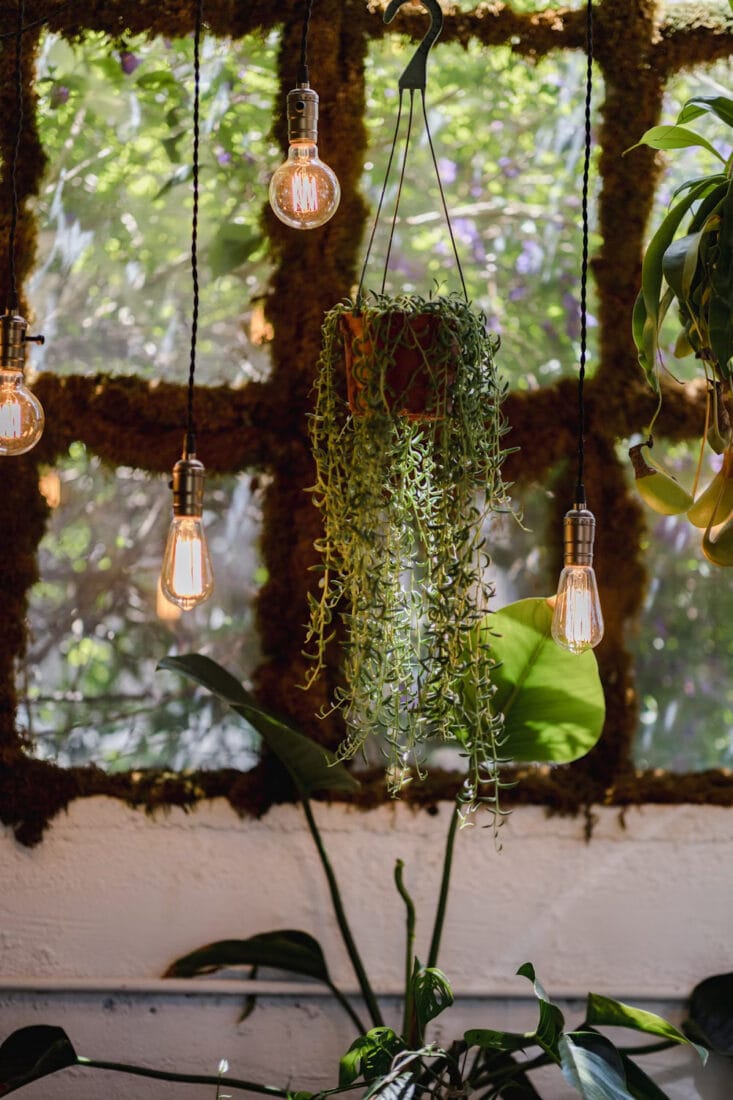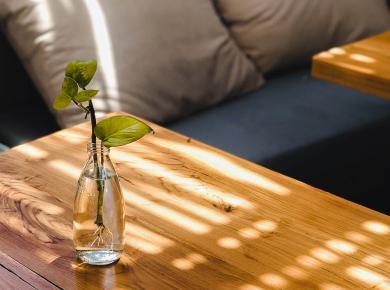How to Hang Plants From Ceiling Without Drilling: A Creative Guide
Hanging plants from the ceiling is a brilliant way to add a touch of nature and beauty to your home.
Whether you have limited space, a growing collection of plants, or simply want to keep them out of reach of kids or pets, hanging plants can be a game-changer.
But what if you don’t want to drill holes or cause any permanent damage to your ceiling?
In this guide, we will explore creative and innovative ways to hang plants from the ceiling without drilling.
Benefits of Hanging Plants from the Ceiling
Before we dive into the various methods of hanging plants without drilling, let’s take a moment to appreciate the benefits of incorporating hanging plants into your home decor:
- Space-saving solution: Hanging plants free up valuable floor and surface space, making them ideal for small homes or apartments.
- Visual appeal: Hanging plants add a touch of greenery and life to any room, creating a visually pleasing and calming atmosphere.
- Improved air quality: Plants naturally purify the air by removing toxins and releasing oxygen, contributing to a healthier indoor environment.
- Versatility: With a wide variety of hanging plant options available, you can choose plants that suit your personal style and preferences.
- Pet and child-friendly: Hanging plants keep your beloved pets and curious children away from potentially harmful plants.
Now that we understand the benefits, let’s explore ten creative ways to hang plants from the ceiling without drilling.
How to Hang Plants From Ceiling without Drilling
1. Choose Plants Suitable for Hanging
The first step in hanging plants without drilling is to select the right plants for the job.
Consider the lighting conditions and care requirements of the plants you choose.
Opt for plants that thrive in low-light environments if your space lacks ample natural light.
Some popular hanging plants include succulents, strings of pearls, creeping figs, lipstick plants, and smaller cacti.
Start with hardy plants that are less sensitive to their environment if you’re new to plant care, and gradually introduce more delicate plants as you gain experience.
2. Find the Perfect Containers
Once you have chosen your plants, it’s time to find suitable containers for them. Look for lightweight options such as natural material baskets made of straw or wicker.
These not only look aesthetically pleasing but also help in maintaining the overall weight. Alternatively, plastic or lightweight terracotta pots can also work well.
Ensure that the containers have proper drainage holes to prevent waterlogging, or opt for pots without drainage holes and be cautious while watering to avoid any potential water damage.
3. Utilize S Hooks and Existing Fixtures
S hooks are versatile and convenient tools for hanging plants without drilling.
Look for opportunities to utilize existing fixtures such as rails, bars, light fixtures, or protruding ledges.
With an S hook, you can easily hang plants from a light fixture, a standing lamp, or even a wall-mounted light fixture.
Be mindful of the weight of the plants and ensure that the fixtures can support the load.
Arrange multiple S hooks at different heights to create a visually appealing display of hanging plants.
4. Get Creative with Macrame Hangers
Macrame hangers have gained popularity for their boho-chic style and versatility.
Embrace your creativity and make your own macrame hangers using basic knots.
There are plenty of online tutorials available to guide you through the process.
Once you have your macrame hangers ready, you can hang them off hooks or any convenient location in your home.
Macrame hangers add a touch of elegance and craftsmanship to your plant display.
5. Harness the Power of Magnets
Using magnets to hang plants is an innovative solution, particularly if you have metal beams or surfaces in your home.
Check if your apartment has metal beams running through it and invest in heavy-duty magnets.
These magnets can hold a surprising amount of weight.
However, it’s crucial to test the weight capacity of each magnet for safety purposes.
Opt for smaller, lightweight plants to ensure they can be securely held by the magnets.
This method adds an interesting contrast between the organic and industrial elements in your home.
6. Maximize Curtain Rods for Plant Display
If you have curtains in your home, consider utilizing the curtain rod for hanging plants.
Simply hang your plants along the rod, creating a new and unique display area.
Be mindful of the number of plants you hang to avoid hindering the functionality of the curtains.
Choose lightweight plants such as small trailing plants or miniature succulents for this method.
This approach allows you to integrate plants seamlessly into your existing decor while maximizing vertical space.
7. Create Your Own Hanging Plant Shelf
A hanging plant shelf is an excellent solution when you’ve run out of surfaces to place your plants.
It adds a new dimension to your space without occupying additional floor area.
You can either build your own shelf using wood or purchase a ready-made option.
Attach eye bolts to the shelf and use chains or cables to hang it securely from sturdy hooks in the ceiling.
Before purchasing hooks, ensure they can support the weight of the shelf and plants.
A hanging plant shelf offers a delightful way to mix and match different plants, creating a stunning visual display.
8. Explore Coat Stands and Hooks
For those who prefer a quick and easy solution, coat stands and hooks provide a convenient way to hang plants.
Many coat stands come with multiple hooks at different heights, offering ample space for hanging plants.
This method allows you to experiment with various plant arrangements and placements.
You can also attach coat hooks to the wall, repurposing them for plant display.
By using coat stands or hooks strategically, you can incorporate plants into every room of your home.
9. Embrace Exposed Beams in the Ceiling
If your home features exposed beams or wooden elements in the ceiling, take advantage of them to hang plants.
Install sturdy hooks or nails into the beams and hang plants at varying heights.
This method adds a rustic and natural touch to your space while utilizing the existing architectural features.
Grouping plants together along the exposed beams creates an eclectic and visually stunning display.
10. Extend to Your Balcony or Garden
Don’t forget to extend your plant hanging endeavors to outdoor spaces like balconies or gardens.
Consider building a pergola that offers ample space to hang plants. A pergola can transform your balcony into a lush, green oasis.
Alternatively, you can use wooden slats or trellises to hang plants in your garden. This allows you to create a vibrant and flourishing outdoor space.
***
With these ten creative methods, you can hang plants from the ceiling without drilling, elevating your home decor and bringing nature inside.
Choose the methods that best suit your space, personal style, and plant collection.
Remember to regularly assess the weight-bearing capacity of the chosen materials and fixtures to ensure the safety and longevity of your hanging plants.
Enjoy the process of designing your unique and stunning plant display!





